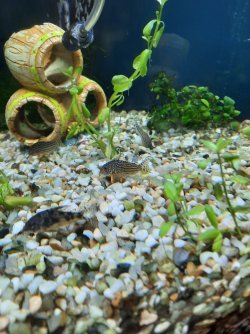So I picked up a tank that was overstocked from offer up about 3 months ago. It had these 2 corys in it and I'm just curious if they are pygmy salt and peppers. They haven't seemed to have grown much after 3 months. If anybody can identify these 2 I would appreciate it. Trying to get them a school but I'd like to make sure they are in fact pygmy first before I go buy more.


Last edited:



